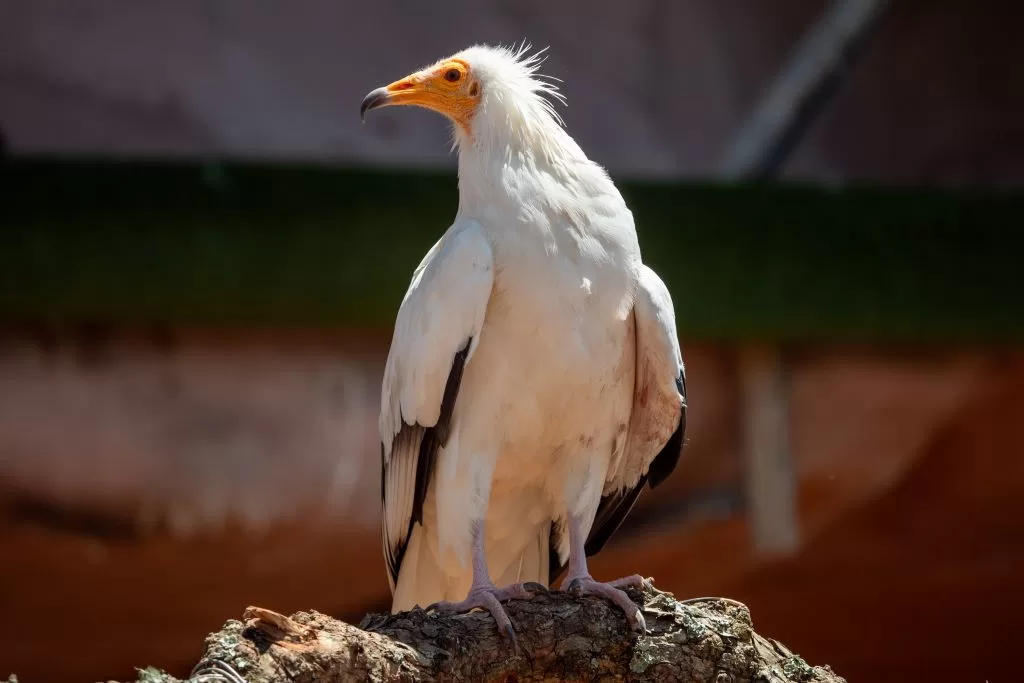African vulture conservation project marks another milestone
A pair of endangered African Egyptian Vultures have made the final leg of their 16 600km journey from San Diego and are now in their permanent Eastern Cape home.

This marks the end of a long and complicated relocation process and the start of a planned breeding programme to reintroduce the birds to their native habitat.
It’s hoped the well-travelled new arrivals will quickly settle in their new enclosure at VulPro@Shamwari, a purpose-built vulture rehabilitation, breeding, research and education facility on Shamwari Game Reserve about an hour outside Gqeberha.
According to Kerri Wolter, VulPro CEO, initial signs are good: “The two are getting on very well. They feed and roost together which is a good sign for eventual pairing when the young female reaches maturity.”
The pair, which have grown up in captivity, are not releasable and will join VulPro@Shamwari’s breeding programme. Should this be successful the offspring will join a captive breeding population. Once this is viable, future offspring will be released at Shamwari in keeping with its ethos of restoring indigenous fauna and flora on the 250 km2 reserve to what it once was. The birds will be fitted with tracking devices.
Egyptian Vultures have faced a catastrophic population decline due to poisoning, electrocution from powerlines and poaching for traditional medicine. Wild vulture populations on the continent have plummeted by more than 90% over the past 30 years.
Records of the species in South Africa date back to 1680 but it is now considered extinct in this country. In a rare sighting, a juvenile was spotted in the Mpumalanga Highveld in 2020. There have been other sightings of vagrant visitors. Before these, the species was last seen on the Wild Coast in 1923.
The two Egyptian Vultures’ move to their bespoke enclosure coincided with the arrival of a larger contingent of birds. These included two young Cape Vulture fledglings which will be released with other captive-bred vultures. Two non-releasable breeding pairs of Lappet-faced vultures, one pair of White-headed Vultures, nine African White-backed vultures and seven Cape vultures will join the captive-breeding programme.
“We hope the non-releasable birds will establish additional pairs enabling us to expand the existing captive-breeding population and maximise our supplementation programme,” explains Wolter.
Cape vulture offspring are released on Shamwari while those from the tree-nesting species are sent to release sites that the National Vulture Breeding Steering Committee identifies as areas where these species need bolstering and support.
Wolter says transporting the vultures is an immense logistical undertaking. The birds have to be captured, loaded into bespoke crates and monitored during the journey to ensure they are not stressed. Security has to be provided throughout.
“As always we’re hugely grateful to DHL which sponsors the relocations, Chery SA for sponsoring the two support vehicles and WeWild Africa which paid for the special crates we use. Gauntlet Conservation Trust, Humane Society International/Africa and the Olsen Animal Trust provided the funding to build the enclosures for the newcomers”
“The Egyptian Vultures are another milestone in this programme which is as important as any other which has brought a species back from the brink of extinction. To see vultures flying over Shamwari again after so long is a testament to VulPro’s success against remarkable odds,” says Joe Cloete, Shamwari’s CEO.
Notes for editors
Vulpro@Shamwari was launched in January 2024 when 163 Cape and African White-backed vultures were transported from VulPro’s facility at Hartebeespoort to bespoke enclosures at Shamwari.
It provides a safe, well-balanced ecosystem for in-situ and ex-situ conservation programmes. Shamwari’s anti-poaching unit provides security.
VulPro@Shamwari comprises eight enclosures, with another being built. These include an enclosure for injured birds that require constant attention and other rehabilitation facilities. Another boasts an artificial cliff to provide optimal conditions for breeding pairs of Cape Vultures. There is a White-backed enclosure and, now, two for Lappet-faced vultures with a third being built. There is a pre-release enclosure built on high ground near the centre of the reserve, from where young, healthy Cape vultures are released.
For more about VulPro@Shamwari visit: https://www.shamwari.com/conservations/vulpro-shamwari/
The two Egyptian Vultures were relocated to South Africa in collaboration with the World Bird Sanctuary and the San Diego Zoo Wildlife Alliance. They were in quarantine before arriving at Shamwari.
Vultures face many threats including drowning in concrete dams, trapping, intentional and unintentional poisoning, killing for food or belief-based uses, electrocution and collision with energy infrastructure such as wind turbines and power lines.
Human encroachment has particularly impacted African savanna raptors. Species in unprotected areas face declines that are more than double that of birds in protected areas. For more information see Dr Phil Shaw et al’s study published in Nature Ecology & Evolution: https://www.nature.com/articles/s41559-023-02236-0




























